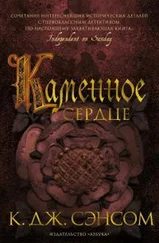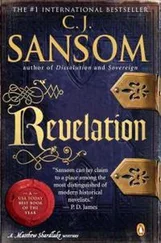C. J. Sansom
TomblandTombland
The seismic events of the 1549 English rebellions are surprisingly little known; but Tombland is based on the known evidence, and the huge camp on Mousehold Heath actually existed.
Some events, such as those concerning the gentleman prisoners in Part Six, and one incident that takes place in Chapter Seventy-five, may appear too far-fetched to be true, but they actually happened.
More detail is given in the Historical Note.
I did well in keeping in Kett’s camp and thought nothing but well of Kett. He trusted to see a new day for such men as I was.
Ralph Claxton, Norfolk parish clerk, prosecuted for speaking these words, 1550
January 1549
I had been in my chambers at Lincoln’s Inn when the messenger came from Master Parry, asking me to attend him urgently. I wondered what might be afoot. He was the Lady Elizabeth’s Comptroller, head of the financial side of her household, and I had worked under him since I was recommended to Elizabeth by Queen Catherine Parr two years before, following King Henry’s death. The old king had left a huge income – £ 3000 a year – to each of his two daughters, with the intention that they should convert the income into landed property. Lord Protector Somerset had decided to let the Lady Mary have first choice of what was available on the market; though her religious conservatism was entirely at odds with his Protestant radicalism, as Henry’s elder daughter, Mary was heir to the throne should anything happen to young King Edward. Her welfare was also important to her cousin the Holy Roman Emperor Charles, with whom Somerset needed to keep on good terms. Elizabeth, on the other hand, counted for little. But Mary was settled now, the bulk of her estates in Norfolk, and Parry was starting to build up blocks of land for Elizabeth, mostly in Hertfordshire. Some juicy piece of ex-monastic land had probably come his way, and he was keen for me to secure it quickly.
I thought how much I owed to that dear lady, Catherine Parr. I had been distressed when, shortly after King Henry’s death, she had married Thomas Seymour, the Protector’s brother, a charming, handsome, unscrupulous and ruthlessly ambitious man. Lady Elizabeth had lived with them, but had left the house under a cloud the previous May, amidst rumours that Seymour had made advances to the then fourteen-year-old girl. And then, last September, Catherine Parr herself died giving birth to Seymour’s child. It had been a great shock, which still lay heavy on my heart.
Telling my clerk John Skelly I might be gone a while, I set out from Lincoln’s Inn to walk to Master Parry’s offices off Knightrider Street – he was not a lawyer, so not a member of the Inns. It was a cold, icy day; dirty snow still lay at the sides of the streets, and I watched my footing carefully among the busy Londoners. I shook my head at how many beggars there were now, crouched in doorways, muffled in whatever rags they had gathered against the cold.
The growing desperation of the poor was one of the many changes that had come to pass these last two years. Henry had left control of the country to a nominated Council until King Edward, now eleven, reached his majority. The Council, however, had quickly devolved power to Edward’s elder uncle, Edward Seymour, now Duke of Somerset, who ruled as a virtual king. Perhaps after sixty years of firm, centralized rule by Henry VII and Henry VIII, those in power could only conceive of government by a single man.
After five years of war with France and Scotland, Henry had left the kingdom at peace when he died. It was much needed; his wars had bankrupted the country, and had been paid for by the debasement of the coinage, adulterating silver with copper. These coins were no longer accepted at face value by traders, and prices were now almost double what they had been a decade ago. The effect on the poorer classes, especially, was catastrophic, for wages remained the same.
But Protector Somerset had promptly launched a massive war against Scotland, hoping the growing number of Scottish Protestants would support him, and that the marriage of the six-year-old Mary, Queen of Scots to King Edward would take place, uniting the kingdoms. He had built a series of forts in the new Italian style which he believed unassailable, throughout the Scottish lowlands and up as far as the River Tay. But the Scotch had resisted everywhere; the forts, poorly built, had been taken one by one, while Mary herself had been sent to France, Scotland’s ally, which had also provided troops. Although the war was a disaster, the Protector refused to accept defeat, and was said to be planning yet another campaign even while his soldiers in the remaining forts were deserting for lack of pay.
I dropped a coin into the cap of yet another beggar shivering against a wall. The man was missing a leg, probably a veteran of the wars. The Protector made much of his claims to be a friend to the poor, and blamed the economic problems on the illegal enclosures of rural manors by landlords, and the turning of tenants off their land to make way for the more profitable sheep. There had been rebellions in Hertfordshire the previous year, and remedies were promised.
I walked downhill, the great spire of St Paul’s Cathedral starkly outlined against the cold blue sky. I was reminded of how, when the cathedral’s great rood screen had been taken down, two workmen had been killed, which religious traditionalists had said was a punishment from God. For religious change, greater by far than under King Henry, was convulsing the country. Under the Protector, Protestant radicals were now firmly in charge. Images were being removed from the churches, wall paintings whitewashed. The chantries where prayers were said for the dead had been abolished and their revenues appropriated to the Crown. And soon there would be a new prayer book in English. It was said that in it the Mass – with the belief that the priest turned the wafer and wine into the actual blood and body of Christ – would be replaced by a Communion commemorating Christ’s sacrifice – a view punishable by burning to death only three years before. I shuddered at the memory of the execution of Anne Askew at Smithfield, which I had been forced to witness.
I entered Knightrider Street and arrived at Parry’s chambers, kicking the snow from my boots before entering the building. To my surprise, the outer office was empty, so I went in and knocked on Parry’s door. A voice called me to enter. I went in, then almost staggered back with surprise. The chair behind the broad desk was occupied, not by the stout figure of Thomas Parry, but by a thin, grey-haired man in black silk robes, the gold chain of the Lord Chancellor of England round his neck. Lord Richard Rich, my oldest enemy. Standing behind him I saw, with almost equal surprise, the spare brown-bearded figure of William Cecil. I had worked with Cecil three years ago, when he was employed by Catherine Parr. His rise since then had been very fast. Not yet thirty, he was one of the Protector’s senior secretaries, already a powerful man. When I worked with him before, he had been a friend. But even then I knew that he put his own success, and the Protestant cause, before anything else. And now he was in company with Rich. I looked at him. Cecil’s protuberant grey eyes fixed on mine, but he said nothing as Rich sat studying me, wolfishly.
Taken utterly by surprise, I blinked, and asked, ‘Where is Master Parry?’
‘In the Tower,’ answered Rich, in a voice as icy as the weather.
I stared at him. He continued, in severe, accusatory tones, his eyes never leaving my face. ‘As is the Lady Elizabeth’s chief gentlewoman Kat Ashley, and sundry others, accused of conspiring treason with Lord Thomas Seymour. The Lady Elizabeth herself is under interrogation by Sir Robert Tyrwhit at Hatfield.’
Читать дальше
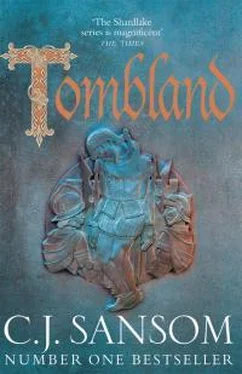
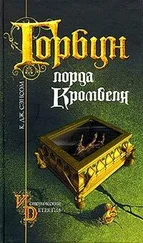
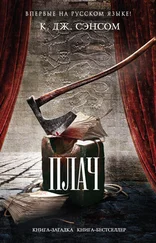

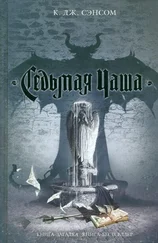
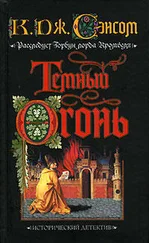
![К Сэнсом - Стенание [другой перевод]](/books/432043/k-sensom-stenanie-drugoj-perevod-thumb.webp)
